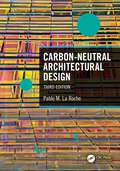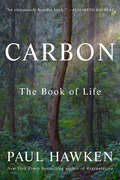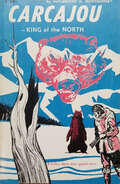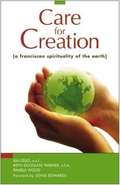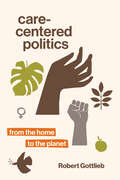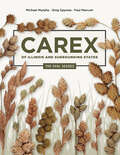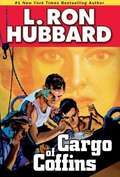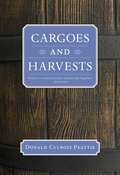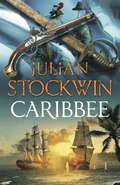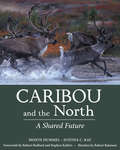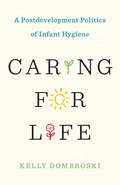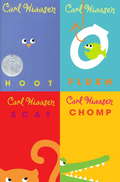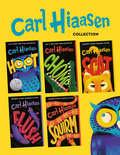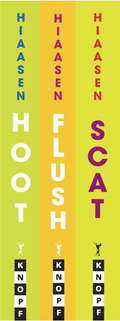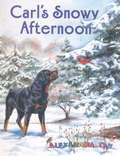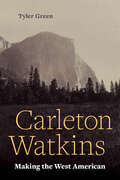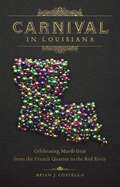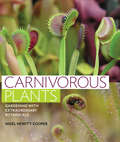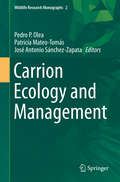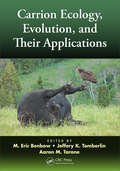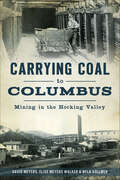- Table View
- List View
Carbon-Neutral Architectural Design
by Pablo M. La RocheThe energy used to build and operate buildings is a significant source of greenhouse gas emissions. While it is possible to reduce emissions through low-carbon design, many architects are not trained to do this. Filling an urgent need for a design reference in this emerging field, this book describes how to reduce building-related greenhouse gas emissions through appropriate design techniques. It presents strategies to achieve CO2 reductions, with an emphasis on control of energy flows through the building envelope and passive cooling and heating strategies. This new, revised edition is updated throughout and includes a new section on embodied carbon and new chapters on daylighting and nature-based cooling.Features: Adds new chapters on daylighting and nature-based cooling with numerous updates throughout the rest of the chapters Presents strategies, illustrated with examples, for new construction and existing buildings to reduce energy consumption and reduce emissions Explains the origins of CO2 emissions associated with the operation and fabrication of buildings: supplying water, disposing of waste from the building, and proposes strategies to reduce them Covers carbon calculations, thermal comfort, indigenous technology, climate‑responsive design, passive cooling and heating, solar design, air flow analysis, daylighting, building simulation and microclimate design with abundant examples Examines siting/location to design buildings that adapt and mitigate their effect on climate change
Carbon: The Book of Life
by Paul HawkenA journey into the world of carbon, the most versatile element on the planet, by the New York Times bestselling author Paul HawkenCarbon is the only element that animates the entirety of the living world. Though comprising a tiny fraction of Earth&’s composition, our planet is lifeless without it. Yet it is maligned as the driver of climate change, scorned as an errant element blamed for the possible demise of civilization.Here, Paul Hawken looks at the flow of life through the lens of carbon. Embracing a panoramic view of carbon&’s omnipresence, he explores how this ubiquitous and essential element extends into every aperture of existence and shapes the entire fabric of life. Hawken charts a course across our planetary history, guiding us into the realms of plants, animals, insects, fungi, food, and farms to offer a new narrative for embracing carbon&’s life-giving power and its possibilities for the future of human endeavor.In this stirring, hopeful, and deeply humane book, Hawken illuminates the subtle connections between carbon and our collective human experience and asks us to see nature, carbon, and ourselves as exquisitely intertwined—inseparably connected.
Carcajou: King of the North
by Rutherford MontgomeryCARCAJOU was determined to destroy every trap Two Gray Hills set. He bent forward eagerly, one powerful front paw lifted for a lightning stroke. The deadly muzzle of the gun stared blackly upon him." Carcajou, the wolverine — 30 pounds of diabolical cunning and snarling fury — feared by every killer from cougar to grizzly. Indian trappers say he is possessed of an evil spirit. Nature's forces take a hand when Carcajou declares war against Indian trapper Two Gray Hills, and when two deceitful traders plot to steal Two Gray Hills' pet bear.
Care for Creation: A Franciscan Spirituality of the Earth
by Ilia Delio Pamela Wood Denis Edwards Keith Douglass WarnerThree of the greatest minds in Franciscan theology, Ilia Delio, O. S. F. , Franciscan Keith Douglass Warner, O. F. M. , and Pamela Wood, come together to discuss one of the greatest crises of our time--the destruction of the Earth. This book takes both a theological and practical approach to developing a Franciscan spirituality of the earth. Four sections highlight the distinct relationships creation has with the world: incarnation, community, contemplation and conversion. In this meticulously researched book, the authors propose ways in which we can all understand our own roles in relationship to the Earth and ways in which we can make it better. Each section offers reflective action opportunities designed to bring the book's ecological and theological insights into the reader's daily life and nurture a Franciscan spirituality of the earth. Prayers, meditations, spiritual practices and group activities are offered which provide a practical hands-on approach to reconnecting with the earth and acting in right relationship.
Care-Centered Politics: From the Home to the Planet
by Robert GottliebWhy a care economy and care-centered politics can influence and reorient such issues as health, the environment, climate, race, inequality, gender, and immigration.This agenda-setting book presents a framework for creating a more just and equitablecare-centered world. Climate change, pandemic events, systemic racism, and deep inequalities have all underscored the centrality of care in our lives. Yet care work is, for the most part, undervalued and exploited. In this book, Robert Gottlieb examines how a care economy and care politics can influence and remake health, climate, and environmental policy, as well as the institutions and practices of daily life. He shows how, through this care-centered politics, we can build an ethics of care and a society of cooperation, sharing, and solidarity. Arguing that care is a form of labor, Gottlieb expands the ways we think about home care, child care, elder care, and other care relationships. He links them to the Green New Deal, Medicare for All, immigration, and the militarization of daily life. He also provides perspective on the events of 2020 and 2021 (including the COVID-19 pandemic, climate change, and movements calling attention to racism and inequality) as they relate to a care politics. Care, says Gottlieb, must be universal—whether healthcare for all, care for the earth, care at work, or care for the household, shared equally by men and women. Care-centered politics is about strategic and structural reforms that imply radical and revolutionary change. Gottlieb offers a practical, mindful, yet also utopian, politics of daily life.
Carex of Illinois and Surrounding States: The Oval Sedges (Distributed for the Illinois Natural History Survey)
by Michael Murphy Greg Spyreas Paul MarcumA common group of plants in the Midwest’s natural areas, the oval sedges supply food for wildlife while their roots bind the soil and their vegetation creates habitat. Carex of Illinois and Surrounding States: The Oval Sedges offers a guide to the identification, distribution, and natural history of this diverse group of plants. Focused on the Carex section Cyperoideae, the editors cover Illinois’ twenty-five species, every oval sedge in Indiana and Kentucky, and nearly every species in Iowa, Michigan, Missouri, and Wisconsin. A two-step process helps users recognize the notoriously difficult-to-identify plants while illustrations and labeled photographs aid users in evaluating morphological characteristics. The editors also furnish first-ever distribution maps for Illinois’ recently described species and varieties plus up-to-date maps for nearly every other species. Drawing on the study of thousands of specimens, Carex of Illinois and Surrounding States: The Oval Sedges is an invaluable resource for botanists, ecologists, environmental engineers, and professional and amateur environmentalists interested in a deeper understanding of these essential plants.
Cargo of Coffins
by L. Ron HubbardUnlock your inner Sherlock. He was the last man Lars Marlin had expected to see in Rio de Janeiro-- and it took all of his willpower not to slay him on the spot.Paco Corvino was a smooth-talking and slippery con man, a contraband runner, and escaped convict . . . not to mention murderer. He also was the man responsible for changing Captain Lars Marlin into Convict 3827645 of the penal colony in French Guiana known as Devil's Island-- a prison from which he had only just escaped.An unstoppable whirlwind of events brings Paco on board as the debonair chief steward of a luxury oceangoing yacht with an heiress and her rich friends as passengers. At the helm is skipper Lars Marlin. No one else knows that Paco and Lars are bitter rivals with an old score to settle, or that the voyage will be their final showdown upon the high seas. "Also, about halfway through the story there's a right-angle plot twist that would make Jeffrey Deaver proud, very effectively lulling readers in a false sense of security before shocking the heck out of them. A first-rate adventure yarn." --Booklist
Cargoes and Harvests
by Donald Culross PeattieCargoes and Harvests, famed naturalist Donald Culross Peattie's first book, eloquently explores agriculture and trade within America's past using thoughtful language that is well ahead of its time. Originally published in 1926, Peattie takes readers on a compelling adventure through the socioeconomic histories of staples such as tea, coffee, cocoa, potatoes and tobacco. Starting with the seeds and roots of the American landscape, Cargoes and Harvests illustrates where we've been and how far we've come. By considering the relationship between a nation and its goods, Peattie unearths countless reflective implications that still resonate within the field of American agriculture today.
Cargoes and Harvests
by Donald Culross PeattieCargoes and Harvests, famed naturalist Donald Culross Peattie's first book, eloquently explores agriculture and trade within America's past using thoughtful language that is well ahead of its time. Originally published in 1926, Peattie takes readers on a compelling adventure through the socioeconomic histories of staples such as tea, coffee, cocoa, potatoes and tobacco. Starting with the seeds and roots of the American landscape, Cargoes and Harvests illustrates where we've been and how far we've come. By considering the relationship between a nation and its goods, Peattie unearths countless reflective implications that still resonate within the field of American agriculture today.
Caribbee: Thomas Kydd 14
by Julian Stockwin'In Stockwin's hands the sea story will continue to entrance readers across the world' - GuardianMore than a decade ago, Thomas Kydd and Nicholas Renzi were in the Caribbean as sailors before the mast in the old Trajan. Now Kydd, a storied hero of Trafalgar, holds the glory of being post-captain of the 32-gun frigate, L'Aurore. After unremitting war a Caribbean posting seems a welcome respite. But Kydd and Renzi soon find themselves facing a familiar threat as the French imperil Britain's vital sugar trade.When merchantmen begin vanishing from the sea, Kydd and Renzi must embark on a dangerous game of espionage, seamanship and breath-taking action in order to destroy a new and terrible danger to the Empire.*********************What readers are saying about CARIBBEE'A proper swashbuckling affair' - 5 stars'Totally amazing!' - 5 stars'Loved this book' - 5 stars'A real find' - 5 stars'A gripping read' - 5 stars
Caribbee: Thomas Kydd 14 (Kydd Sea Adventures Ser.)
by Julian Stockwin'In Stockwin's hands the sea story will continue to entrance readers across the world' - GuardianMore than a decade ago, Thomas Kydd and Nicholas Renzi were in the Caribbean as sailors before the mast in the old Trajan. Now Kydd, a storied hero of Trafalgar, holds the glory of being post-captain of the 32-gun frigate, L'Aurore. After unremitting war a Caribbean posting seems a welcome respite. But Kydd and Renzi soon find themselves facing a familiar threat as the French imperil Britain's vital sugar trade.When merchantmen begin vanishing from the sea, Kydd and Renzi must embark on a dangerous game of espionage, seamanship and breath-taking action in order to destroy a new and terrible danger to the Empire.*********************What readers are saying about CARIBBEE'A proper swashbuckling affair' - 5 stars'Totally amazing!' - 5 stars'Loved this book' - 5 stars'A real find' - 5 stars'A gripping read' - 5 stars
Caribou and the North: A Shared Future
by Robert Redford Robert Bateman Monte Hummel Justina C. Ray Stephen Kakfwi"If the caribou die, then we die." These few words speak eloquently to the significanceof caribou for northern peoples. They were spoken not by a wise old chief, but by a 13-year-old Dene youth in 2007 during a hearing regarding uranium exploration on the caribou wintering grounds.Right now there is urgent, widespread concern about the future of the most centralof species: caribou. Caribou and the North brings both the facts and the feelingsof the current situation to a North American readership. The writers look at why we need to conserve the caribou, the threats that have faced caribou in the past, present, and future, and the actions that we can take. Also included is an appendixwith up-to-date information on the range, movements, habitats, numbers, population trends, and key threats to caribou in North America.
Caring for Life: A Postdevelopment Politics of Infant Hygiene (Diverse Economies and Livable Worlds)
by Kelly DombroskiThe transformational possibilities of everyday hygiene and care practices In order to mitigate the worst forecasts of climate change, many of us need to make drastic adjustments to how we live and what we consume. For Kelly Dombroski, these changes must also happen in the home: in rethinking routines of care and hygiene that still rely on disposable and plastic products. Caring for Life examines the remarkable evolution in Asia-Pacific hygiene practices and amplifies the creative work of ordinary people guarding human and more-than-human life in their everyday practices of care. Dombroski develops the concept of &“guarding life,&” a viewpoint that counters homogenous cultural practices and imposed sanitation standards and instead embraces diverse hygiene practices that are networked across varying wisdoms and bodies. She traces how the Chinese diaper-free infant toilet training practice of baniao has traveled to Australia and New Zealand, and she explores the practice of elimination communication, in which babies learn to communicate to their caregivers when they need to eliminate, thus removing the need for diapers. A mother herself, Dombroski conducted ethnographic research while mothering to examine how collectives of mothers draw on Chinese knowledge and their own embodied practices of childcare to create new hybrid forms of infant care. Caring for Life is a call to action, a theory of change, and a fascinating account of the transformational possibilities of care practices. It shows how experiments in personal care can lead to collective, widespread change, ultimately providing a practical and hopeful vision for environmental action. Retail e-book files for this title are screen-reader friendly with images accompanied by short alt text and/or extended descriptions.
Carl Hiaasen 4-Book Collection: Hoot, Flush, Scat And Chomp
by Carl HiaasenDiscover the funny side of Florida with #1 New York Times bestselling author Carl Hiaasen in this collection of four books: Hoot, Flush, Scat and Chomp. "It's classic Hiaasen—laugh-out-loud Satire in a Florida setting."—Life
Carl Hiaasen 5-Book Collection: Hoot; Flush; Scat; Chomp; Squirm
by Carl HiaasenThis collection features five of Newbery Honor-winning and #1 New York Times bestselling author Carl Hiaasen's beloved classics!Take a trip to Carl Hiaasen's Florida--where the animals are wild and the people are wilder--with this collection that includes Hoot, Flush, Scat, Chomp, and Squirm! Hoot: Everybody loves Mother Paula's pancakes. Everybody, that is, except the cute but endangered owls that live on the building site of the new restaurant. Can the awkward new kid and his feral friend prank the pancake people out of town? Or is the owls' fate cemented in pancake batter?Flush: The Coral Queen casino boat is treating the ocean like a toilet bowl, so Noah's dad decides to sink the darn thing. Problem is, there's no evidence of illegal dumping. Now Dad's in the clink, the boat's back in business, and only Noah can flush the truth out into the open.Scat: The most terrifying teacher in school is missing in the Everglades, and it's up to Nick and Marta to find her. But first they'll have to reckon with a junior arsonist, a wannabe Texas oilman, and a ticked-off Florida panther. It's all about to hit the fan, and when it does, these kids better scat.Chomp: When Wahoo Cray's dad--a professional animal wrangler--takes a job with a reality-TV survival show, Wahoo figures he'll have to do a bit of wrangling himself to keep his father from killing the show's inept and egotistical star. But the job keeps getting more complicated--and it isn't just the animals who are ready to chomp.Squirm: This summer, Billy will fly across the country, hike a mountain, float a river, dodge a grizzly bear, shoot down a spy drone, save a neighbor's cat, save an endangered panther, and then try to save his own father.
Carl Hiaasen Collection: Hoot, Flush, Scat, Chomp
by Carl HiaasenDiscover the funny side of Florida with #1 New York Times bestselling author Carl Hiaasen in this collection of four books: Hoot, Flush, Scat and Chomp."It's classic Hiaasen--laugh-out-loud Satire in a Florida setting." --Life
Carl Hiaasen for Kids: Hoot, Flush, Scat
by Carl HiaasenThis ebook compendium includes the entire text for three of Carl Hiaasen's most acclaimed books for young readers: Hoot, Flush, and Scat.
Carl's Snowy Afternoon
by Alexandra DayWhen Madeleine's parents go to the Pond Party, they leave Carl and the baby at home for a cozy winter afternoon with a babysitter. But Carl and Madeleine have plans of their own---they want to play in the snow! After getting all bundled up, they sneak off to go sledding, build a snowman, and even make an appearance at the party and try sliding on the ice at the pond. Of course, resourceful Carl gets the baby home before her parents return--and the babysitter is never the wiser. Everyone's favorite Rottweiler appears here in a wintertime romp. Picture descriptions added.
Carleton Watkins: Making the West American
by Tyler Green"[A] fascinating and indispensable book."—Christopher Knight, Los Angeles TimesBest Books of 2018—The Guardian Gold Medal for Contribution to Publishing, 2019 California Book Awards Carleton Watkins (1829–1916) is widely considered the greatest American photographer of the nineteenth century and arguably the most influential artist of his era. He is best known for his pictures of Yosemite Valley and the nearby Mariposa Grove of giant sequoias. Watkins made his first trip to Yosemite Valley and Mariposa Grove in 1861 just as the Civil War was beginning. His photographs of Yosemite were exhibited in New York for the first time in 1862, as news of the Union’s disastrous defeat at Fredericksburg was landing in newspapers and while the Matthew Brady Studio’s horrific photographs of Antietam were on view. Watkins’s work tied the West to Northern cultural traditions and played a key role in pledging the once-wavering West to Union. Motivated by Watkins’s pictures, Congress would pass legislation, signed by Abraham Lincoln, that preserved Yosemite as the prototypical "national park," the first such act of landscape preservation in the world. Carleton Watkins: Making the West American includes the first history of the birth of the national park concept since pioneering environmental historian Hans Huth’s landmark 1948 "Yosemite: The Story of an Idea." Watkins’s photographs helped shape America’s idea of the West, and helped make the West a full participant in the nation. His pictures of California, Oregon, and Nevada, as well as modern-day Washington, Utah, and Arizona, not only introduced entire landscapes to America but were important to the development of American business, finance, agriculture, government policy, and science. Watkins’s clients, customers, and friends were a veritable "who’s who" of America’s Gilded Age, and his connections with notable figures such as Collis P. Huntington, John and Jessie Benton Frémont, Eadweard Muybridge, Frederick Billings, John Muir, Albert Bierstadt, and Asa Gray reveal how the Gilded Age helped make today’s America. Drawing on recent scholarship and fresh archival discoveries, Tyler Green reveals how an artist didn’t just reflect his time, but acted as an agent of influence. This telling of Watkins’s story will fascinate anyone interested in American history; the West; and how art and artists impacted the development of American ideas, industry, landscape, conservation, and politics.
Carnival in Louisiana: Celebrating Mardi Gras from the French Quarter to the Red River
by Brian J. CostelloFrom the revelers on horseback in Eunice and Mamou to the miles-long New Orleans parade routes lined with eager spectators shouting “Throw me something, mister!,” no other Louisiana tradition celebrates the Pelican State’s cultural heritage quite like Mardi Gras. In Carnival in Louisiana, Brian J. Costello offers Mardi Gras fans an insider’s look at the customs associated with this popular holiday and travels across the state to explore each area’s festivities.Costello brings together the stories behind the tradition, gleaned from his research and personal involvement in Carnival. His fascinating tour of the season’s parades, balls, courirs, and other events held throughout Louisiana go beyond the well-known locales for Mardi Gras. Exploring the diverse cultural roots of state-wide celebrations, Costello includes festivities in Lafayette, Baton Rouge, New Roads, and Shreveport. From venerable floats to satirical parades, exclusive events to spontaneous street parties, Carnival in Louisiana is an indispensable guide for Mardi Gras attendees, both veteran Krewe members seeking to expand their horizons and first-time tourists hoping to experience of all sides of Louisiana’s favorite season.
Carnivorous Plants: Gardening with Extraordinary Botanicals
by Nigel Hewitt-CooperOnce known only to collectors, adolescent boys, and fans of the cult film The Little Shop of Horrors, carnivorous plants are poised to be the next big trend in home gardening. They provide striking architectural style and can be grown indoors and outdoors. Carnivorous Plants is an accessible, smartly designed guide to growing this unusual group of plants. It offers a general introduction to the world of carnivorous plants, and growing and cultivation information for commonly available and easily grown varieties. Nigel Hewitt-Cooper also provides advice on where to grow the plants; year-round care, cultivation, and maintenance; and a directory of the best carnivorous plants for home gardeners.
Carnivorous Plants: Plants That Eat Insects (Into Reading, Level T #14)
by Katie SharpNIMAC-sourced textbook. Did you know that some plants eat insects? Read about some of those plants to find out where they grow and how they trap their prey!
Carrion Ecology and Management (Wildlife Research Monographs #2)
by Pedro P. Olea Patricia Mateo-Tomás José Antonio Sánchez-ZapataCarrion, or dead animal matter, is an inherent component of aquatic and terrestrial ecosystems worldwide, and is exploited by a wide diversity of organisms from different trophic levels, including microbes, arthropods and vertebrates. Further, carrion consumption by scavengers, i.e. scavenging, supports key ecosystem functions and services such as recycling nutrients and energy, disposing of carcasses and regulating disease spread. Yet, unlike dead plant matter, dead animal decomposition has received little attention in the fields of ecology, wildlife conservation and environmental management, and as a result the management of carrion for maintaining biodiversity and functional ecosystems has been limited. This book addresses the main ecological patterns and processes relating to the generation and consumption of carrion both in terrestrial and aquatic ecosystems. It also discusses a number of conservation concerns and associated management issues, particularly regarding the increasing role of human-mediated carrion in ecosystems. Lastly, the book outlines future research lines in carrion ecology and management, and identifies the major challenges for scavengers and scavenging processes in the Anthropocene.
Carrion Ecology, Evolution, and Their Applications
by M. Eric Benbow Jeffery K. Tomberlin Aaron M. TaroneShortlisted for the 2018 TWS Wildlife Publication Awards in the edited book categoryDecomposition and recycling of vertebrate remains have been understudied, hampered largely due to these processes being aesthetically challenging (e.g., smell and sight). Technological innovations have provided the means to explore new and historically understo
Carrying Coal to Columbus: Mining in the Hocking Valley
by David Meyers Elise Meyers Walker & Nyla VollmerAs early as 1755, explorers found coal deposits in Ohio's Hocking Valley. The industry that followed created towns and canals and established a new way of life. The first shipment of coal rolled into Columbus in 1830 and has continued ever since. In 1890, the United Mine Workers of America was founded in Columbus. Lorenzo D. Poston became the first of the Hocking Valley coal barons, and by the start of the twentieth century, at least fifty thousand coal miners and their families lived and worked in Athens, Hocking and Perry Counties. Authors David Meyers, Elise Meyers Walker and Nyla Vollmer detail the hard work and struggles as they unfolded in Ohio's capital and the Little Cities of Black Diamonds.
